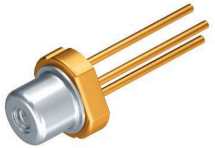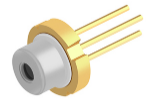Manufacturers
- Abracon
- Adam Tech
- Aerospace, Defense & Marine
- Agastat
- AIC
- AKM Semiconductor
- Alcoswitch
- Allegro
- Alps Electric
- Altera
- AMI Semiconductor
- AMP
- ams
- Analog Devices (ADI)
- Aptina Imaging
- Atmel
- Avago / Broadcom
- AVX
- Axicom
- Bccomponents
- Beyschlag
- BI Technologies
- Bourns Inc.
- Bowei Integrated Circuits
- Bridgelux
- Buchanan
- California Micro Devices
- Catalyst Semiconductor
- CGS
- Cirrus Logic
- Citizen Electronics
- CML Microcircuits
- Coiltronics
- Cooper Bussmann
- Corcom
- Core Logic
- Cree
- CSR PLC
- CTS
- Cypress Semiconductor
- Dale
- Data Image
- Deutsch
- Diodes Incorporated
- DOMINANT Opto Technologies
- E-T-A
- Eaton
- ECS
- Edison Opto
- Elcon
- EPCOS
- Epistar
- Epson
- Everlight Electronics
- Exar
- Fairchild Semiconductor
- FCI
- Freescale Semiconductor
- Fremont Micro Devices (FMD)
- Fujitsu Semiconductor
- Fulltech Electric
- General Semiconductor
- Harvatek
- Holsworthy
- Hsuan Mao Technology
- IDT
- Infineon Technologies
- Innolux
- International Rectifier (IR)
- Intersil
- IRC
- ISSI
- IXYS-IC
- Jing Cheng Electronical
- JL World
- Johanson Dielectrics
- Johanson Technology
- JRC / NJR
- JST
- KEC
- Kilovac
- Kingbright
- Kyocera Industrial Ceramics
- LEDiL
- Linear Technology / ADI
- Lite-On Technology
- Littelfuse
- Lumex
- Lumileds
- Luminary Micro
- Luminus Devices
- Macronix
- Maojwei / ZJPT
- Maxim Integrated
- MCC
- Mean Well Enterprises
- Microchip Technology
- Micron
- Microsemi
- Mini-Circuits
- Molex
- Murata Manufacturing
- Murata Power Solutions
- MWT
- National Semiconductor
- Nichicon
- Nippon Chemi-Con
- NJR / JRC
- NVE
- NXP Semiconductors
- OEG
- Omnivision
- ON Semiconductor
- Optek Technology
- Optrex
- OSRAM Opto Semiconductors
- OTAX
- Panasonic
- Peregrine(pSemi)
- Potter & Brumfield
- Power Integrations
- PowerStor
- Preci-Dip
- Prewell
- Products Unlimited
- Pulse Electronics
- PulseCore Semiconductor
- Qorvo
- Raychem
- Renesas Electronics
- RFMD
- Richtek Technology
- ROHM Semiconductor
- Rubycon
- Samsung Electro-Mechanics
- Samsung Semiconductor
- Schaffner
- Schrack
- Seiko Instruments, Inc. (SII)
- Semtech
- Sensata
- Seoul Semiconductor
- Sfernice
- Sharp Display
- Sharp Microelectronics
- Silicon Labs
- Siliconix
- Skyworks Solutions
- SoniCrest / JL World
- Spansion
- Sprague
- Stanley Electric
- STMicroelectronics
- Sunny Electronics
- Susumu (SSM)
- Taimag
- Taiyo Yuden
- TDK
- TDK-Lambda
- TE Connectivity
- Teccor
- Texas Instruments (TI)
- Thin Film
- Tianma Micro-electronics
- TOCOS
- TOKO
- Toshiba Electronic Components
- TT Electronics
- Tusonix
- TXC
- Tyntek
- Vishay
- Vishay Precision Group
- Vitramon
- Walsin Technology
- Weidmuller
- Welwyn
- Wickmann
- Winbond
- Xilinx
- Yageo
- Zetex Semiconductors
- ZJPT / Maojwei
新闻中心
ams OSRAM’s new generation of color lasers features higher beam quality and allows for smaller power supply
2023-06-26 | 返回
>Manufacturers of laser modules used in scanning and leveling applications can use the new lasers’ tighter tolerances to reduce operating current and voltage, and so reduce the size of the power supply
>Superior beam quality avoiding artefacts and interferences
>New PLT3 and PLT5 products launched at Laser World of Photonics
Premstaetten, Austria and Munich, Germany (June 26, 2023) -- ams OSRAM, a global leader in optical solutions, introduces improved blue and green lasers based on a new generation of its diode emitter chip. The chip’s superior performance enables manufacturers to increase the value of laser modules and devices aimed at applications such as leveling and scanning. Enhancements made possible by the new lasers include a smaller power supply, a more homogeneous beam, and more efficient coupling to optical fiber.
The improved PLT3 products are available in a TO38 Metal Can® package, and the PLT5 products in a TO56 package. Optical power output is 100 mW for the blue lasers, and between 10 mW and 50 mW for the green.

Optical power output, wavelength options and beam shape are maintained from the previous generation of PLT3 and PLT5 products, but the new versions offer improved beam quality, and a narrower distribution across production units of values for key operating parameters.
Martin Wittmann, Senior Director Product Marketing for Visualization & Sensing at ams OSRAM, said: ‘By choosing the latest versions of the popular PLT family of laser diodes, customers benefit from excellent beam quality and tight tolerances, making it easier for them to produce better laser module devices.’
The new ams OSRAM chip improvement in beam quality means that laser-module manufacturers gain coupling efficiency when light is coupled into a waveguide or glass fiber giving greater flexibility in the specification of the required output power from the laser source. In addition, the new PLT3 and PLT5 lasers have a more homogeneous beam. This improves a laser module’s ability to illuminate a surface or object uniformly.
Tighter tolerances reduce maximum power requirement
ams OSRAM has enhanced its laser diode fabrication technology to narrow the distribution of values for key operating parameters across the population of production units. This makes it easier for laser module manufacturers to maintain the required tolerance in the driver circuits.
In addition, the new lasers feature lower maximum values for operating current and voltage, as well as for threshold current. For instance, the maximum threshold current for the 30 mW green laser, the PLT5 518FB_P, has been reduced by around 25 percent from 60 mA in the previous generation of PLT5 products to 45 mA in the latest version.
The tighter tolerances in the new diodes, and their lower operating current, mean that the power supply to the laser can be shrunk. The space and power savings enabled by use of the new PLT laser diodes is an important benefit for portable battery-powered devices in particular.
Scanning applications enhanced by use of high-performance green lasers
A typical application that will benefit from the new ams OSRAM chip is barcode scanning with green lasers. Large warehouses or open-air storage units suffer problems with the use of traditional red laser scanners, because the red dot is difficult to see over a long distance or in bright daylight. This increases the risk that an operator scans the wrong item.
The human eye is much more sensitive to green light than to red, however. This means that green laser scanners are less affected by interference from ambient light, and as a result are becoming increasingly popular in laser leveling and scanning applications. Many laser scanners are mobile, battery-powered products: they will benefit substantially from the reduced maximum operating current drawn by the new PLT family of green laser diodes, extending run-time between battery charges.
Source: http://www.ams.com





